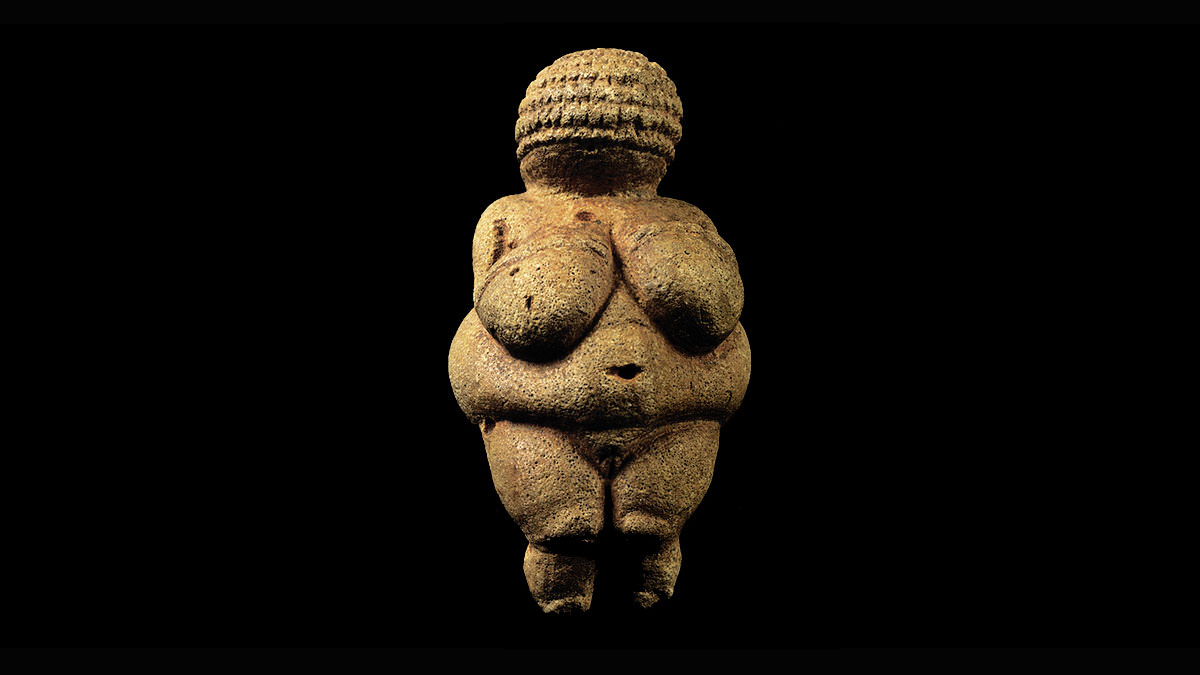Venus of Willendorf is a statue from the Paleolithic period which was discovered in 1908 from a site near the village of Willendorf in Austria. It is the best known from around 200 such statuettes which have been found from sites across Europe. Around 30,000 years old, this tiny limestone sculpture is faceless with large breasts, hips and thighs; and no feet. There is much conjecture on why it was created with several theories coming forward since its discovery. These include it being a fertility goddess, a self-portrait or a symbol of power. Here is all you need to know about this famous Paleolithic statue.
Table of Contents
S1 – Discovery
Venus of Willendorf was unearthed on the left bank of the Danube in Willendorf, a village in the Wachau valley in Lower Austria. It was found on August 7, 1908, during excavations led by Josef Szombathy; and supervised by Hugo Obermaier and Josef Bayer. Josef Szombathy was an Austro-Hungarian archaeologist; Hugo Obermaier was a Spanish-German prehistorian and anthropologist; and Josef Bayer was an Austrian anthropologist, archaeologist and prehistorian. The statue now resides in the Natural History Museum of Vienna in Austria.
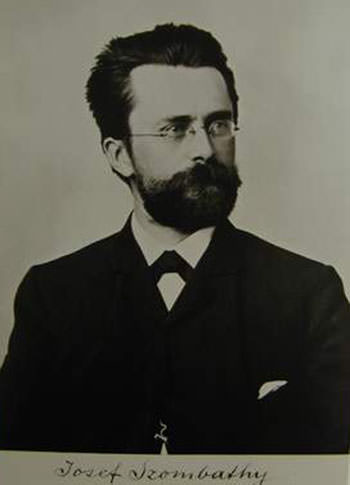
S2 – Description
The Woman of Willendorf is exactly 110 mm in height. It represents a symbolized and faceless female with exaggerated genitalia, pronounced hips, a belly which is jutting out and heavy breasts. Diminutive arms rest on the breasts and the figure has a sophisticated headdress or hairdo. The taut curls that hug her head are not just closely observed but also precisely rendered.

The statuette is abstract, unlike the naturalistic depictions of animals in Paleolithic art. Its unknown creator has reduced the female form to the basic shapes. The statuette appears to stress on fertility. This may be found in other stone-age figurines too which focus on the reproductive qualities of the female and are not concerned with the facial features.
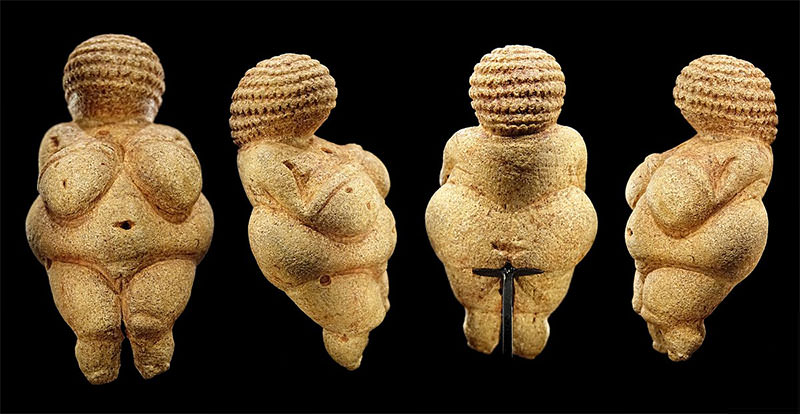
S3 – Age
Venus of Willendorf is constructed from oolitic limestone. As oolitic limestone is not available around Willendorf, it is believed that the statue was either carved elsewhere or the raw material was carried and then the statue was created in Austria. Latest studies suggest that the oolitic limestone used to carve Woman of Willendorf came from the south of the Alps in what is now modern-Italy.
As the stone is much older than the carving, it is difficult to date the figurine. After repeated attempts, the current accepted estimate of its age is 25,000-30,000 years. This puts it in the Gravettian period (around 29,000-22,000 years ago) in the Paleolithic Era.
S4 – Purpose
There is much debate on the purpose of Woman of Willendorf. Early interpretations of the statue usually related it to fertility considering it a fertility goddess, a representative of pro-creativity, etc. This now is being challenged with other reasons being put forward including that it is a self-portrait created by a woman. The woman carving her own shape would have to look down at her own body resulting in exaggerated breasts and belly; and slender legs.
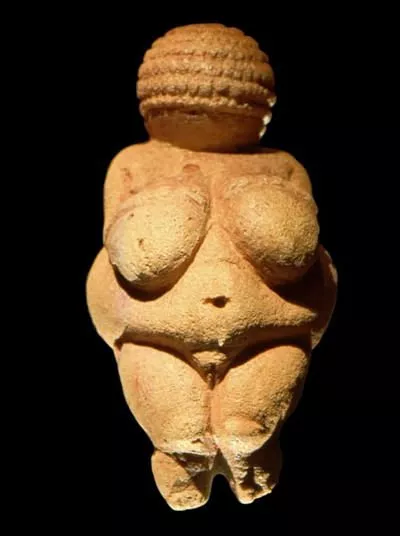
Another view is that it was created to teach women the various stages of pregnancy and childbirth. Yet another explanation is that it symbolized power, like other phallic symbols created during the time. All this is of course conjecture as it is not possible to pinpoint a reason to something created so long ago.
S5 – The Name Venus?
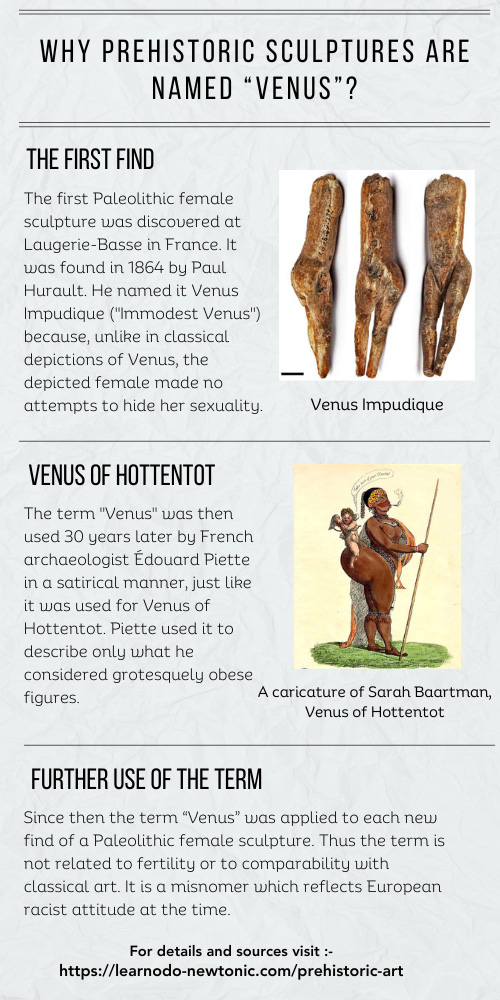
S6 – Paleolithic Art Overview
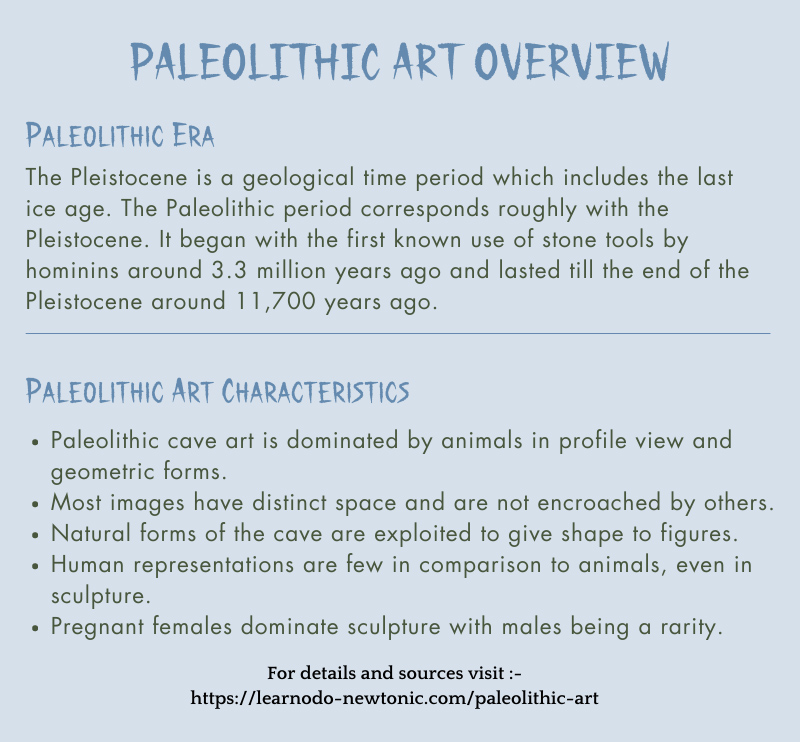
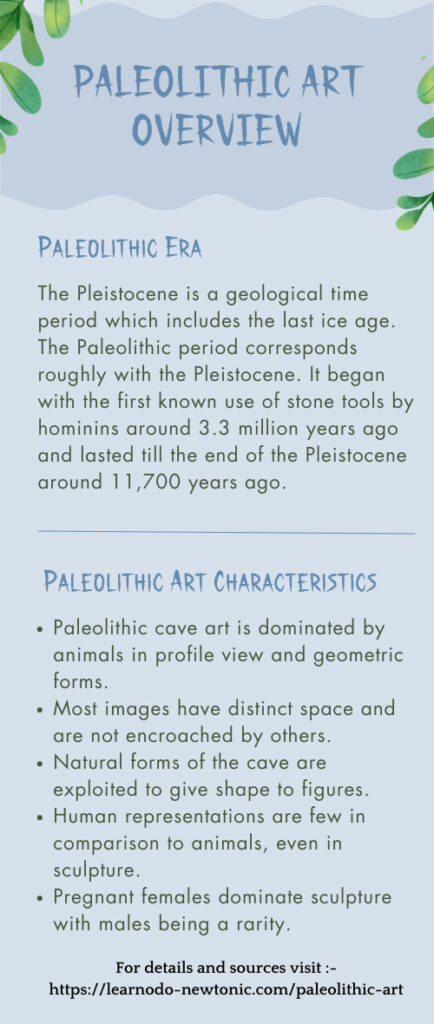
Main Sources
S1:-
Weber, G.W., Lukeneder, A., Harzhauser, M. et al. “The microstructure and the origin of the Venus from Willendorf.” Sci Rep 12, 2926 (2022).
S2:-
Janson, H. W., Davies, Penelope J. E. “Janson’s History of Art: The Western Tradition”. p10.
S3:-
Kiely, Alexandra. (Nov 10, 2022). “The Mysterious Venus of Willendorf: What Does It Mean?”. The Collector.
S4:-
Learn, Joshua. (Mar 5, 2021). “What Did the Venus of Willendorf Originally Represent?”. Discover Magazine.

